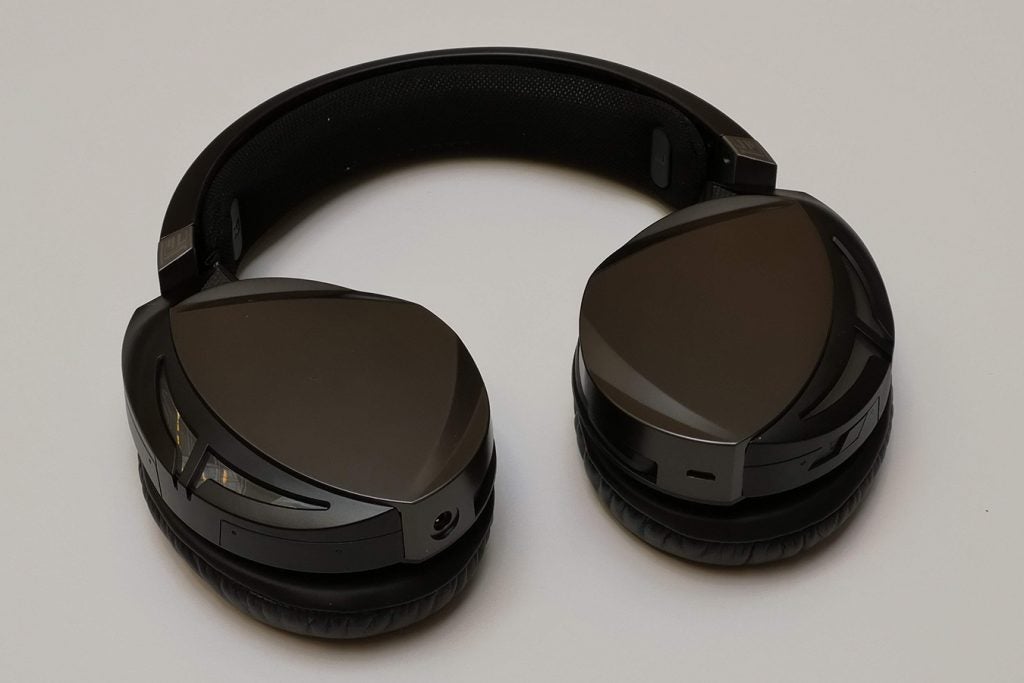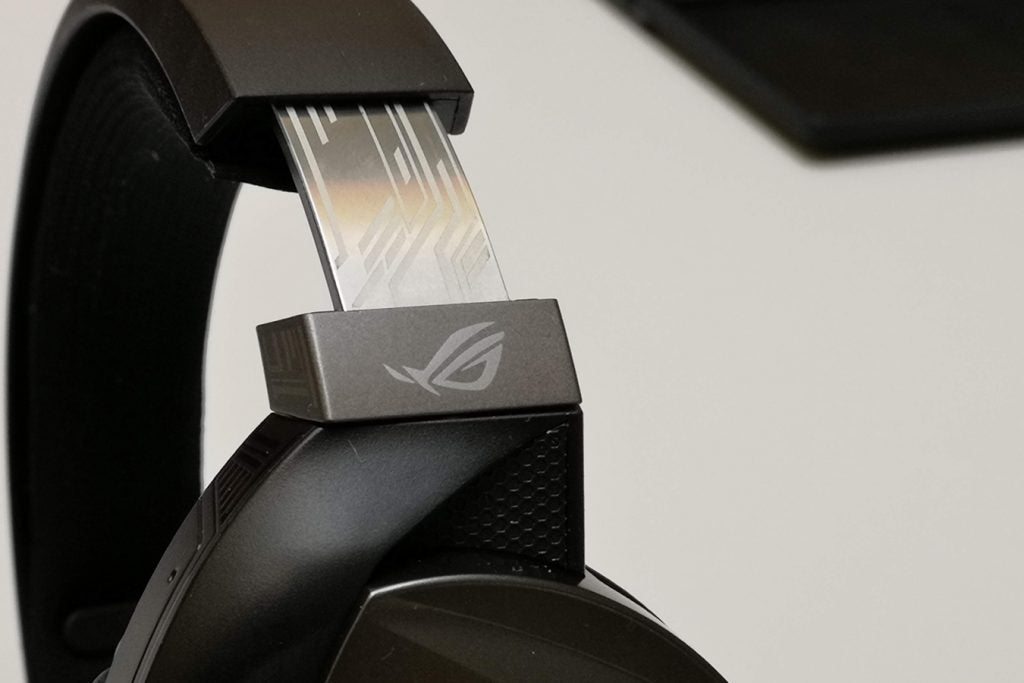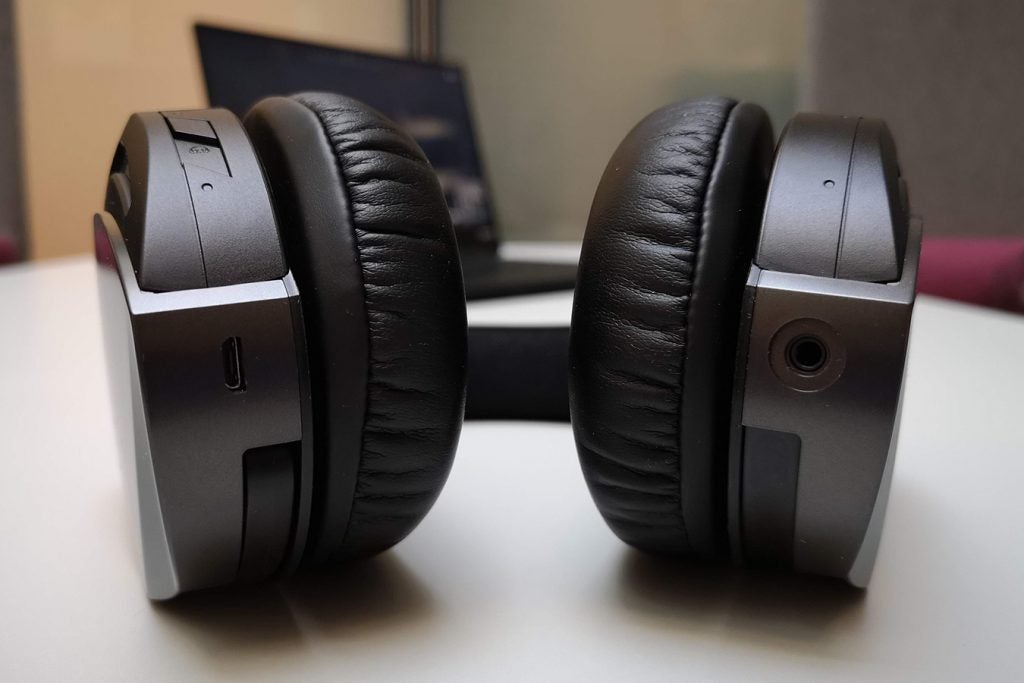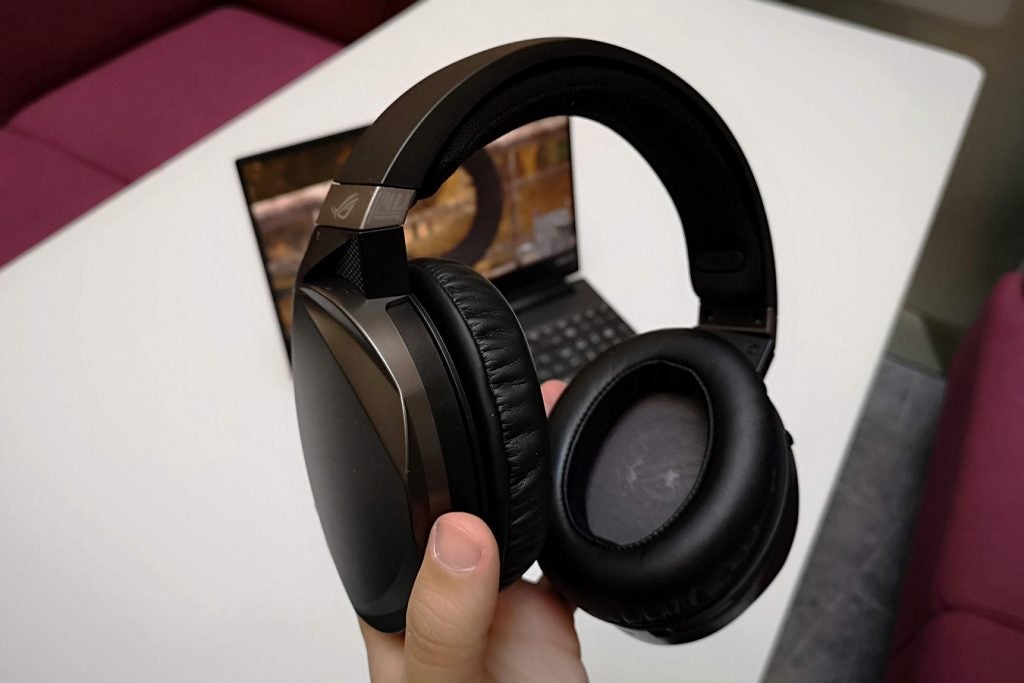Asus ROG Strix Fusion 300 Review
Asus ROG Strix Fusion 300
The Strix 500's biggest strengths for less money

Verdict
Pros
- Nice design details
- Exceptionally comfortable
- Rich, balanced sound (for a gaming headset)
Cons
- Limited lighting effects
- No wireless connectivity
- No physical volume controls
- Buggy lighting control software
Key Specifications
- Review Price: £124.99
- 7.1 virtual surround sound
- PC, Mac, Xbox One, PlayStation 4 & mobile support
- 50mm Asus Essence drivers
- Interchangeable ear cups
- Asus Aura LED lighting
What is the Asus ROG Strix Fusion 300?
Asus has dropped the barrier to entry for those after a taste of its ROG gaming headset range, with the introduction of the new Strix Fusion 300.
On paper, the audio hardware on offer looks decidedly similar to that of the more established Strix Fusion 500 headset, with 50mm drivers, the same frequency response (20Hz to 20kHz), microphone and the promise of 7.1 virtual surround sound, all wrapped up in a distinctly similar design. The two models even weigh the same at 360g.
So with so much in common, is there any reason not to choose this more affordable headset over Asus’s existing offering?
Related: Best Gaming Headsets
Asus ROG Strix Fusion 300 – Design, build and features
When developing their respective gaming lines, manufacturers will often design their headsets to differentiate them from the microphone-laden headsets used by mere mortals. More often than not, this translates to an aesthetic that is unequivocally ‘gamer’.
In reality, this typically takes the form of swathes of black and grey plastic of various textures, brushed metal or chromed accents, hexagonal motifs and, fairly regularly, LED lighting. Almost all of these elements feature on the ROG Strix Fusion 300 in one area or another.

The outer face of each ear cup is covered in grey plastic, with flared surfacing to add interest to the otherwise bland finish (the Fusion 500 features a mirror-polish). Behind these panels is a dark plastic, housing two curved chevrons of translucent light-piping, through which the glow of the 300’s LEDs are channelled.
Round the back of the ear cups, the black plastic features some decidedly ‘techy’ pattern work, which offers a contrasting shine against the headset’s predominantly matte finish.
Where each cup joins the headband, you’ll find a small mesh pattern embossed into the surface just beneath the hinges, which lets the ear pieces turn 90 degrees. As a result, shifting the whole thing around your head, perhaps to temporarily uncover one ear, or get more comfortable, or whatever, is easy. It also allows for easier storage of the Strix Fusion 300 when not in use.
The hinged components feature the same pattern work of the plastic beneath; however, this time it’s etched onto a metal plate that ups the feel and build quality immensley. It’s these plates that also bear Asus’s ROG insignia and serve as the anchor point for each side of the headband.

Also highlighting Asus’s attention to detail is the outer face of the headband itself, which I discovered whilst adjusting the headset to fit my head. That (apparently) Mayan-inspired ‘techy’ pattern weaves all the way along the headband –which, if you buy into the aesthetic, is just more of a good thing.
The outer face of the headband is protected by matte black plastic and features the full ‘Republic of Gamers’ name embossed into an offset position. On the inside of the headband is a thick strip of mesh-covered foam cushioning, with the ‘L’ and ‘R’ markers studded into the material, just above each ear cup.
With regards to comfort, the Strix Fusion 300 is great to wear for long periods of time. There’s so much padding that, considering the headset’s size and weight, it feels secure without crushing against the sides of your skull. It comes with leatherette-covered foam earpads out-the-box, which conceal each driver behind another subtly logo-laden nylon mesh (another nice design detail that I could have easily missed).
Note that there’s no dedicated glasses relief system, as seen on Turtle Beach’s Stealth headsets, but the foam should prove soft enough to accommodate the arms of most spectacles without discomfort.

Asus has thrown in a second pair of ‘hybrid’ ear cushions that feature a composite design. I was pleasantly surprised to find that these leatherette-backed mesh-fronted alternatives do little to modify the background noise suppression on offer, but help with heat dissipation if – like me – you run warm.
In swapping out the ear cushions, which in itself is a decidedly easy task, I realised that Asus has added additional articulation into each ear cup, which would help explain the Fusion 300’s comfort level, no matter the number of adjustments you might make or the length of time you play for.
The boom microphone itself bends and folds down from the front edge of the left ear cup. It feels strange to force the component to flex, but once it’s out you’ll realise the whole thing is designed to be flexed and readjusted without issue. It hinges on a stepped mechanism, so the microphone is only active when it’s fully extended and muted in any other position, meaning it’s easy to silence and wake with a gentle nudge.

One strange omission is that there are no hardware controls on the Fusion 300, only a single button (which I’ll get on to) and some ports. I’d have at least appreciated a volume slider or scroll wheel. As such, you have to adjust the volume on the PC/console end, rather than on the headset. This feels decidedly awkward, especially when for only a few quid more you could make use of the Fusion 500’s fancy touch panel.
What you do get are two ports. First is a 3.5mm headphone jack input on the bottom of the right ear cup, which connects via the included (or in my case, accidentally omitted) four-pole cable to your smartphone or console (unlike the 500, the 300 supports both Xbox One and PS4). The base of the left ear cup, meanwhile, affords you a digital connection to your PC via micro-USB 2.0. The included cables are braided and the contacts on both ends of each are gold-plated for that added touch of luxury.

One aspect I haven’t really touched upon yet is the headset’s LED lighting system, and that’s no accident. Tuned to Asus’s own Aura technology, the Fusion 300 – like the rest of the company’s light-toting Strix-branded gaming hardware – can communicate with the (Windows-only) Aura software to alter colour and pattern behaviour. It also allows access to a few other features, depending on your Strix product.
Once installed, I plugged the Fusion 300 into my gaming laptop, fired up the software and basked in the red glow – the headset only supports red, not RGB – of the accent lighting along the back edge of each ear cup. I attempted to tweak the lights, to set them to pulse as opposed to their current solid state, but without success.
A quick Google revealed that the Aura software is notoriously buggy, particularly on 64-bit builds of Windows 10. After a trip to the Registry editor, a couple of reinstallations of the software, and restarts of my machine, I was still experiencing issues. Based on the various forums I perused, there appears to be no distinct correlation between those who have and haven’t encountered Aura’s temperamental nature.
Considering the time I spent trying to breathe life back into the 300’s lighting system, I place the blame squarely on Asus for offering an unpolished piece of software – surprising, considering the sheer gamut of hardware over which it holds influence.
As such, I continued testing the headset without the colourful lightshow that most gamers have become accustomed to. Sigh.
Asus ROG Strix Fusion 300 – Audio quality
As mentioned at the top of this review, on a technical level, there appears to be little that sets the audio hardware on the Fusion 300 apart from that of the 500. Like its shinier sibling, the 300 boasts Asus’s own tuned 50mm Essence drivers, with the same frequency response range, impedance and so on. Where it does fall short is with the absence of high-definition audio support, which suggests that it doesn’t make use of the same tuned ‘hi-fi grade’ ESS DAC and amp as found on the 500, but instead more modest components.
With regards to gaming in 2018, a lack of Hi-Res audio is a minor inconvenience at best, with most titles yet to embrace the standard. In practice, the large drivers inside the Fusion 300 still do a great job of delivering immersive game audio.
I found that the clarity and power of the low-end really stood out. When handling a shotgun in PUBG (PlayerUnknown’s Battlegrounds), for example, my ears were met with a satisfying thud, presenting far more punch than the ageing Tritton Detonator headset I usually use could ever hope to.

Related: Best PC Games
Asus also promises ‘airtight chamber technology’, which is a roundabout way of saying the ear cups should provide respectable passive noise cancellation by holding a tight seal around your ears. Luckily, they do – although to say they’re airtight is an odd choice of word for an audio product. Also, with no ENC (electronic noise cancellation) onboard, it’s doubly important that the 300 screens out background din well.
Then there’s the matter of the 300’s party piece. Tap a concealed button on the rear face of the left ear cup and you activate the headset’s 7.1 virtual surround sound. In past gaming headsets, such a feature has proven hit or miss, and while I’m not wholly sold on the experience offered up by the 300, it unquestionably works.
It makes pinpointing out-of-sight enemies or audible in-game items – think Fortnite’s loot chests – easier to locate in a 3D space, not to mention it ups immersion by a number of degrees. There’s enough versatility in the drivers to deliver crisp detail and depth throughout the range, too. However, I noticed a considerable shift in balance when switching surround sound on and off. When enabled, game audio is generally quieter overall and the ratio of bass to mids to high frequencies is skewed into what sounds like a much flatter curve.
It’s worth noting that without USB power, which includes playing on a console or mobile device, the Fusion 300 reverts to standard stereo output, which remains enjoyable, albeit a little less refined.
Related: Best Gaming Mouse
As for the microphone, I didn’t encounter any issues with the flexible offering attached to the 300, but teammates never made mention of its output as anything other than satisfactory. It’s at least a microphone you can rely on, able to suppress background noise and retain enough clarity to ensure that you’re heard in rowdy firefights.
Why buy the Asus ROG Strix Fusion 300?
At a shave under £125 (although I’ve seen it for as low as £79.99), Asus has distilled the biggest selling points of the Fusion 500 into the most affordable member of its ROG Strix Fusion headset family yet.
The Strix Fusion 300 boasts excellent comfort for extended gaming sessions, rich audio range and diversity, and is capable 7.1 virtual surround sound in a suitably stylish gaming headset.
Based on my experience, the promise and the reality of living with the ROG Strix Fusion 300 is very different. Nevertheless, so long as you prioritise sound and comfort above that Aura lighting, you shouldn’t have any real reason to find fault with this otherwise dependable headset.
Verdict
The Asus Strix Fusion 300 is Asus’s most affordable gaming headset for those after a taste of 7.1 virtual surround sound – just don’t place your faith in that lighting system.
Related: Best Gaming Keyboard


